Traditional pottery has been an integral part of Vietnamese culture for thousands of years. The art of creating ceramics has been passed down through generations, and the country’s unique pottery lines reflect its rich history and heritage. In this article, we will take a closer look at the history of pottery in Vietnam, its various lines, and the characteristics that set them apart.
A brief history of pottery in Vietnam
Pottery is an important part of Vietnamese culture. It has existed in Vietnam for over 6-7 thousand years, evidence of its presence in the cultural sites of Hoa Binh, Bac Son, Ha Long. According to legend, the creation of pottery was a sacred mystery. They believe that ceramics are a kind of power deep underground, where they are guarded by demons. Getting them can only be done on a clear day, and the powder turns into ceramic only when it is raised to the surface and exposed to sunlight.
Over time, pottery making in Vietnam became more advanced and complex. The unique geography and natural resources of the country allow the creation of distinct lines of pottery, each with its own style and technique. With a long history and distinctive style, Vietnamese pottery is considered one of the best in the world. The history of the formation and development of pottery is a historical process associated with the progress of mankind
Origins of Vietnamese pottery
The history of pottery in Vietnam can be traced back to the Neolithic period, around 4000 BCE. The earliest examples of Vietnamese pottery were simple clay pots used for cooking and storage. These early pots were made by hand, using the coil method, in which long strips of clay were coiled together to form the vessel. The clay was then smoothed and shaped by hand before being fired in open pits, which were dug into the ground and lined with wood or other materials. The pots were placed in the pits, which were then filled with wood and lit. As the wood burned, the pots were slowly baked to harden the clay and make them durable for everyday use. This method of firing, known as pit firing, was the most common method of firing pottery in Vietnam for thousands of years. It was only in the later centuries that potters started using more sophisticated techniques, such as wood-fired kilns, to achieve different effects and colors in their pottery.
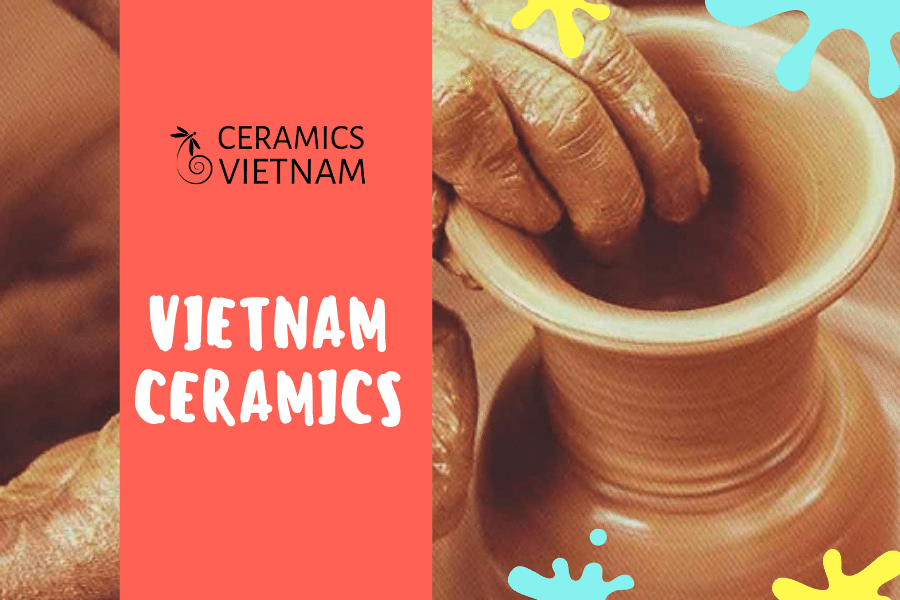
A glimpse into the origins of Vietnamese pottery, from simple handmade clay pots to the evolution of firing techniques.
The influence of Chinese pottery
Vietnam’s strategic location on the trade route between China and Southeast Asia meant that Chinese pottery had a significant influence on the development of Vietnamese pottery. During the Han dynasty (206 BCE – 220 CE), Chinese potters began trading with Vietnam and introduced new techniques and designs to local potters. One of the most significant contributions was the use of wheel-thrown pottery, which allowed potters to produce more consistent and symmetrical vessels. The Chinese also introduced new glazing techniques and decorative motifs, which were quickly adopted by Vietnamese potters. However, Vietnamese potters were not content with simply copying Chinese designs. Over time, they adapted and modified these techniques to suit their own needs and developed their own unique styles and motifs. For example, Vietnamese potters developed a technique known as crackle glaze, in which a glaze with small cracks is applied to the surface of the pottery, creating a unique and beautiful effect. The result was a rich and varied tradition of pottery making that reflected both Chinese and Vietnamese influences.
The development of Vietnamese pottery
By the 10th century, Vietnamese pottery had developed its own distinct style. During the Ly dynasty (1009–1225), pottery production was centralized in the capital city of Hanoi, where a large number of potters were employed by the court to produce ceramics for everyday use as well as for religious and ceremonial purposes. The potters of Hanoi produced a wide range of ceramic objects, including bowls, vases, and jars, which were decorated with intricate motifs and designs. The glazes used at this time were typically green or brown, and were made from natural materials such as iron oxide and copper. These glazes were applied in multiple layers to create a rich and varied effect. In addition to glazes, Hanoi potters also used incising and carving techniques to create intricate patterns on the surface of their pottery. The result was a vibrant and sophisticated tradition of pottery making that reflected the artistic and cultural achievements of the Ly dynasty.
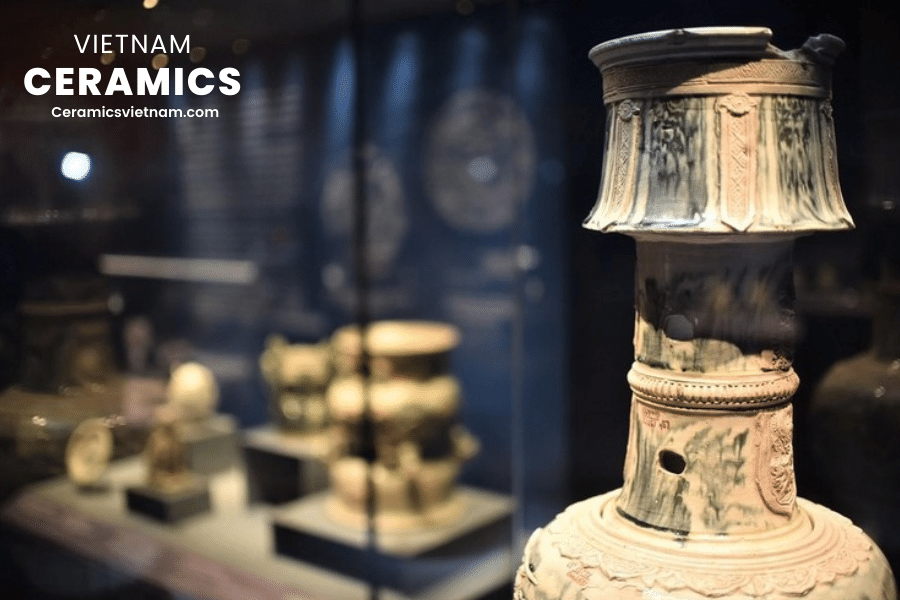
The flourishing Era of pottery in Vietnam’s Ly and Tran Dynasties
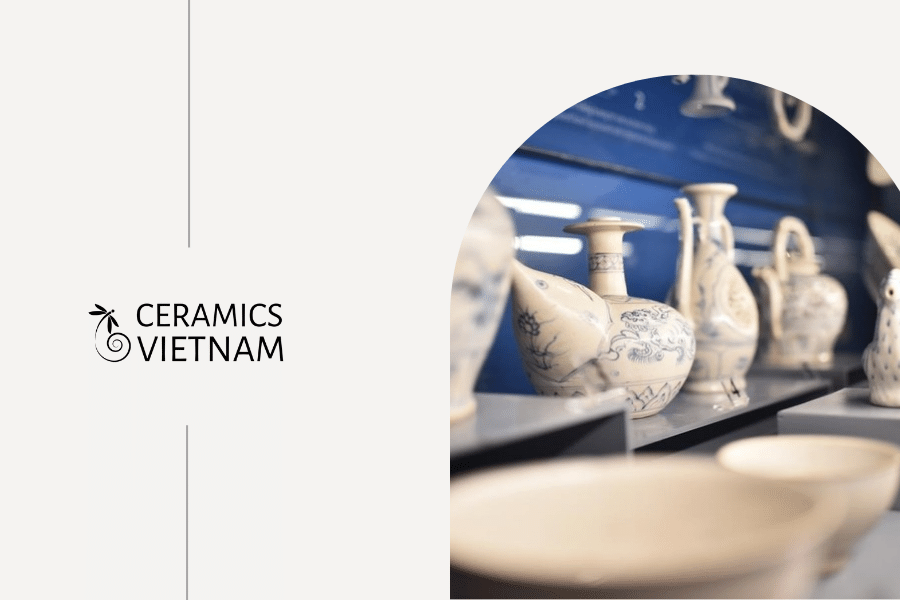
Discover the diverse range of pottery items including kettles, vases, bowls, and plates.
The golden age of Vietnamese pottery
The 15th century was a golden age for Vietnamese pottery. During this time, the Tran dynasty (1225–1400) moved the capital to the city of Thang Long (modern-day Hanoi). This led to an expansion of the pottery industry, and the production of high-quality ceramics for both domestic and export markets. Vietnamese pottery from this period is characterized by its intricate designs and rich glazes. The potters of Thang Long produced a wide range of objects, including large vases, jars, bowls, and plates. They used a variety of techniques, including incising, carving, and painting, to create intricate patterns and designs on the surface of their pottery. The glazes used at this time were often multicolored and highly decorative, with colors ranging from green and brown to blue and white. The most famous product of this period is the blue and white porcelain, which was highly prized by collectors and traders throughout Asia. Vietnamese pottery from the 15th century represents the height of artistic achievement in the country’s ceramic tradition and continues to be highly valued by collectors and connoisseurs today.
The decline of Vietnamese pottery
The decline of Vietnamese pottery began in the 17th century, when the country was invaded by the Chinese Qing dynasty. The Qing rulers, seeking to protect their own pottery industry, banned the production of high-quality ceramics in Vietnam. This had a significant impact on the country’s pottery industry, as many potters were forced to abandon their craft. The quality of Vietnamese pottery declined, and the country’s once-thriving export market all but disappeared. The situation worsened during the French colonial period (1858-1954), when the French introduced new industrial methods of production that further undermined the traditional pottery industry. However, despite these challenges, traditional pottery making continued to survive in Vietnam, with many artisans working to preserve and promote the country’s rich ceramic heritage. Today, Vietnamese pottery remains an important part of the country’s cultural heritage, with many artisans producing high-quality ceramics using traditional techniques and designs.
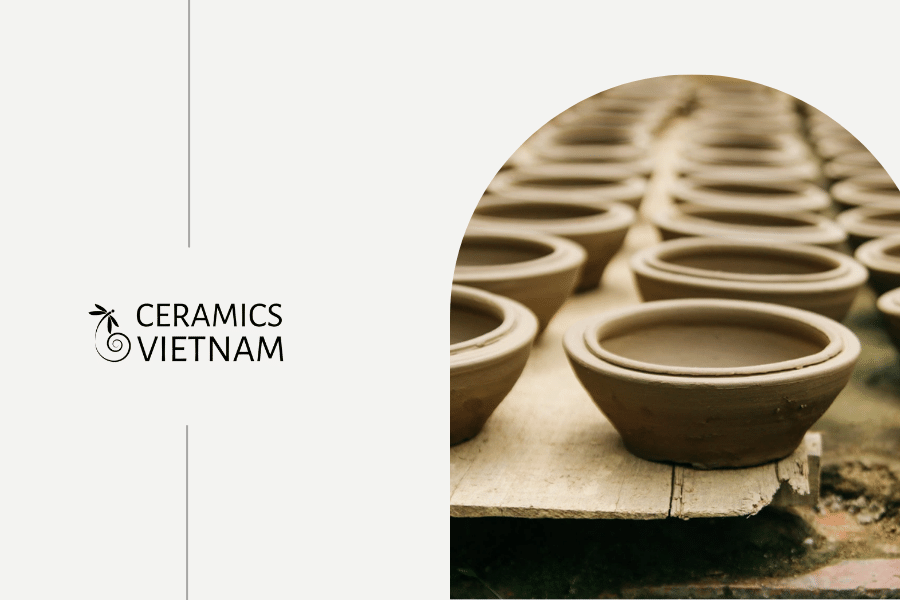
The struggle of traditional Vietnamese pottery
The revival of Vietnamese pottery
The revival of Vietnamese pottery began in the 20th century, when a group of artists and scholars began to study and promote traditional Vietnamese ceramics. These efforts were driven by a desire to preserve the country’s rich cultural heritage and to revive a traditional craft that had been in decline for centuries. As part of this movement, schools and workshops were established to teach traditional pottery techniques and to provide a space for artists to practice and refine their skills. These efforts were instrumental in reviving interest in traditional pottery making and in reestablishing the country’s reputation as a center of ceramic artistry. Today, Vietnamese pottery continues to evolve, with many artists incorporating modern techniques and designs into their work while still honoring the traditional forms and styles that have been passed down through the generations.
The current state of Vietnamese pottery
Today, Vietnamese pottery is known for its high quality and distinctive style. The country is home to many talented potters, who use traditional techniques to create beautiful and unique ceramics. Vietnamese pottery is highly valued by collectors and enthusiasts around the world, and is an important part of the country’s cultural heritage. The most famous centers of Vietnamese pottery production include Bat Trang, which is known for its fine porcelain, and Phu Lang, which is famous for its large vases. In addition, many individual artists and workshops are producing high-quality ceramics using traditional techniques and designs, and are contributing to the ongoing evolution of Vietnamese pottery. Today, Vietnamese pottery is not just a reflection of the country’s rich cultural heritage, but also a vibrant and dynamic art form that continues to inspire and captivate audiences around the world.
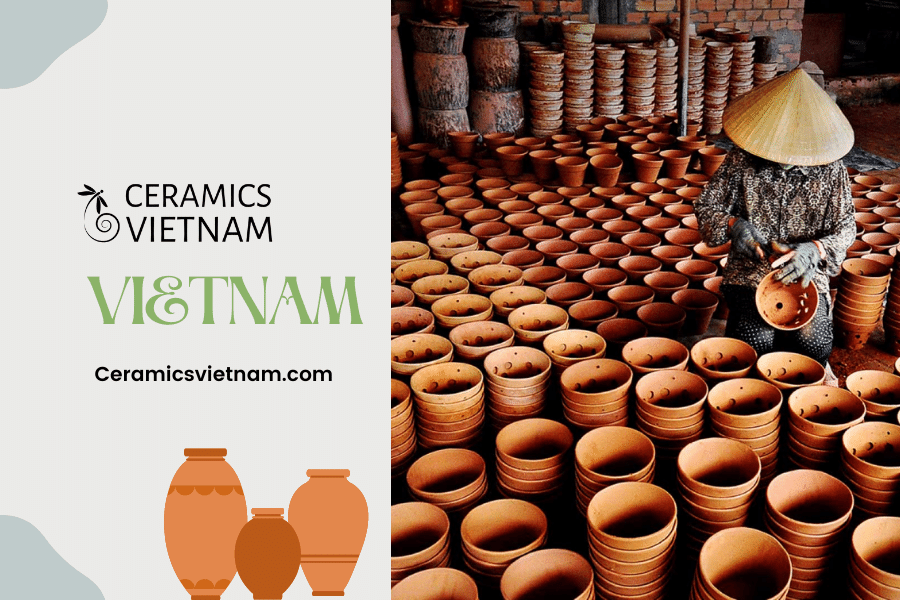
The current state of Vietnamese pottery
Famous Vietnamese potters
There have been many famous Vietnamese potters throughout history who have contributed to the country’s rich ceramic tradition. One of the most well-known is Chu Dau, who lived during the 15th century. Chu Dau pottery is known for its intricate designs and rich glazes, which often incorporate motifs such as dragons, phoenixes, and flowers. Chu Dau pottery was highly prized during its time and is still highly valued by collectors today. Other famous Vietnamese potters include Le Cong Thanh, who is known for his mastery of traditional techniques and his innovative designs, and Nguyen Thanh Chuong, who is known for his use of bold colors and unusual shapes. These and other famous Vietnamese potters have helped to shape the country’s ceramic tradition and have inspired generations of artists and artisans to continue to push the boundaries of what is possible with clay and glaze.
The future of Vietnamese pottery
Despite its long and rich history, Vietnamese pottery faces many challenges in the modern world. Competition from cheap mass-produced ceramics from China and other countries has made it difficult for Vietnamese potters to make a living. Additionally, many young people are not interested in learning traditional pottery techniques, which puts the future of the craft in jeopardy.
However, there are also reasons for optimism. Efforts to preserve and promote traditional Vietnamese pottery are ongoing, with many organizations and individuals working to raise awareness of the country’s rich ceramic heritage. This includes the establishment of schools and workshops dedicated to teaching traditional techniques, as well as the organization of exhibitions and other events to showcase the work of Vietnamese potters. In addition, there is a growing appreciation for handmade and unique ceramics, with many consumers seeking out one-of-a-kind pieces that reflect their individual tastes and values.
Vietnamese potters are also finding new ways to incorporate modern techniques and designs into their work, which could help to attract a new generation of customers. This includes the use of digital technology to design and create ceramics, as well as the exploration of new glazes and firing techniques. In addition, many potters are experimenting with new forms and shapes, which can help to differentiate their work from mass-produced ceramics and attract a more discerning clientele.
Nowadays, while Vietnamese pottery may face many challenges in the modern world, there is reason to be optimistic about its future. By continuing to innovate and adapt, Vietnamese potters can ensure that their rich ceramic tradition continues to thrive for generations to come.
In conclusion, pottery has been an important part of Vietnamese culture for thousands of years. From its origins in the Neolithic period to the present day, Vietnamese pottery has evolved and adapted to changing times and influences. Despite facing many challenges, Vietnamese pottery continues to be a source of pride for the country and its people.
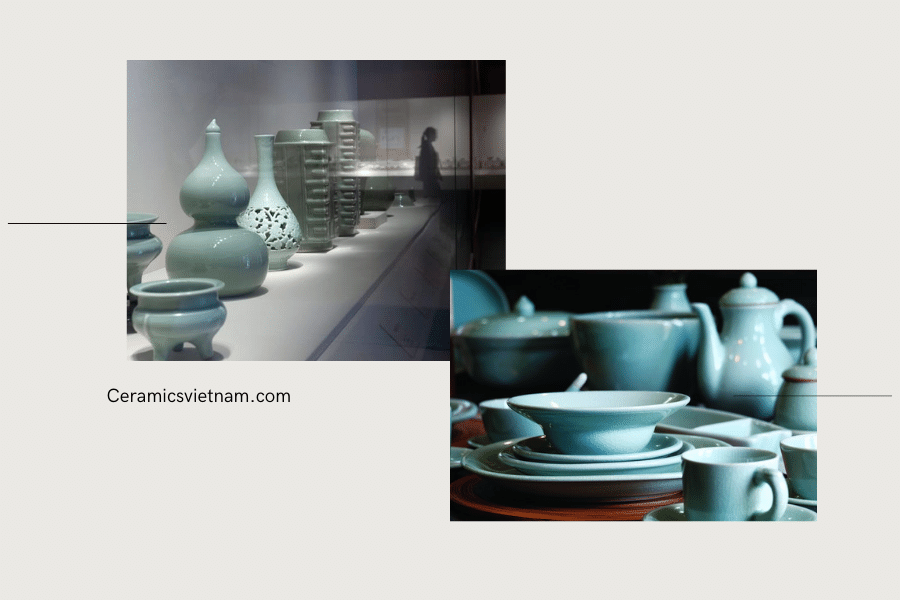
Challenges and Opportunities for Vietnamese Pottery in the Modern World
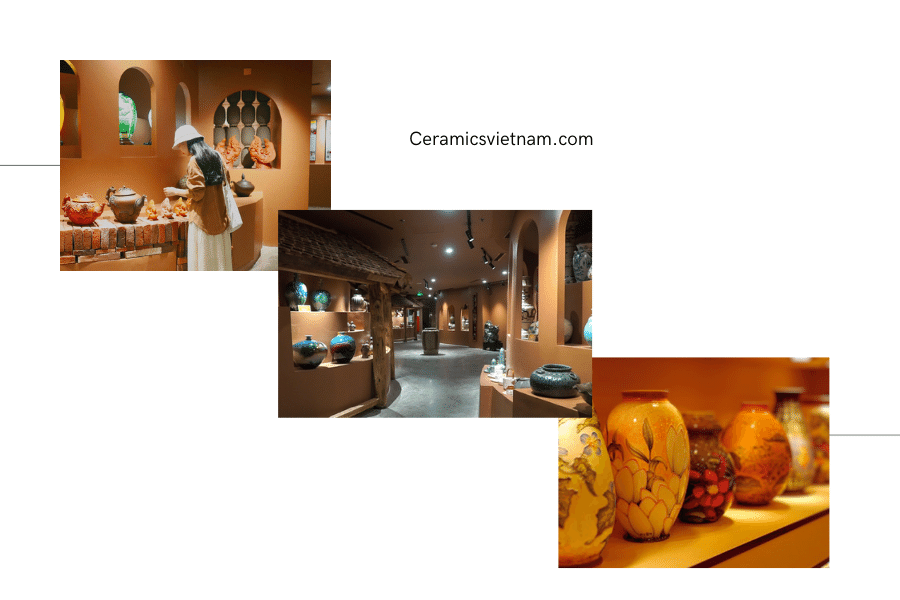
Vietnamese potters can continue to uphold their rich ceramic heritage and adapt to changing times
The various ceramics lines in Vietnam
Ceramics have been a significant part of Vietnamese culture for centuries. The country has a long history of producing exquisite pottery, and its ceramics industry continues to thrive to this day. There are various ceramics lines in Vietnam that are popular for their unique designs and techniques. In this article, we will discuss the different types of ceramics lines in Vietnam and their features.
Vietnamese ceramics have a long history that dates back to the Bronze Age. The country’s ceramics industry flourished during the 11th and 12th centuries, and Vietnam became an important center for ceramic production in Southeast Asia. Today, Vietnam is famous for its high-quality ceramics, which are exported all over the world.
Traditional ceramics
Traditional ceramics are some of the most popular ceramics lines in Vietnam. These ceramics are known for their unique designs and are made using traditional techniques that have been passed down for generations. Traditional ceramics are often handcrafted, and they come in various shapes and sizes. Some of the most popular traditional ceramics lines in Vietnam include:
Bat Trang ceramics
Located on the outskirts of Hanoi, Bat Trang is considered one of the most famous villages in Vietnam for its ceramics. Bat Trang ceramics is a type of traditional Vietnamese pottery that is produced in this area. The village has a long history of ceramic production, dating back to the 14th century. Today, it is one of the most famous centers of ceramic production in Vietnam, and its ceramics are highly valued by collectors and enthusiasts around the world.
Bat Trang ceramics are known for their high quality and intricate designs. The pottery is made from local clay, which is known for its purity and plasticity. The clay is shaped by hand using traditional techniques, including the coil method and wheel throwing. Once the pottery has been shaped, it is left to dry in the sun before being fired in a wood-fired kiln.
One of the most famous types of Bat Trang ceramics is its fine porcelain, which is known for its thin walls and translucent quality. The porcelain is often decorated with intricate designs and motifs, such as dragons, flowers, and landscapes. In addition to porcelain, Bat Trang potters also produce a wide range of other ceramics, including bowls, plates, vases, and figurines.
Bat Trang ceramics are famous for their glazes, which are often multicolored and highly decorative. The glazes are made from natural materials, including wood ash, rice husk ash, and metal oxides. The potters at Bat Trang are known for their skill in creating complex glazes, which can involve layering multiple colors and textures to create a rich and varied effect.
In addition to its traditional ceramics, Bat Trang has also embraced modern techniques and designs. Many potters at Bat Trang are experimenting with new glazes, forms, and shapes, and are incorporating digital technology into their work.
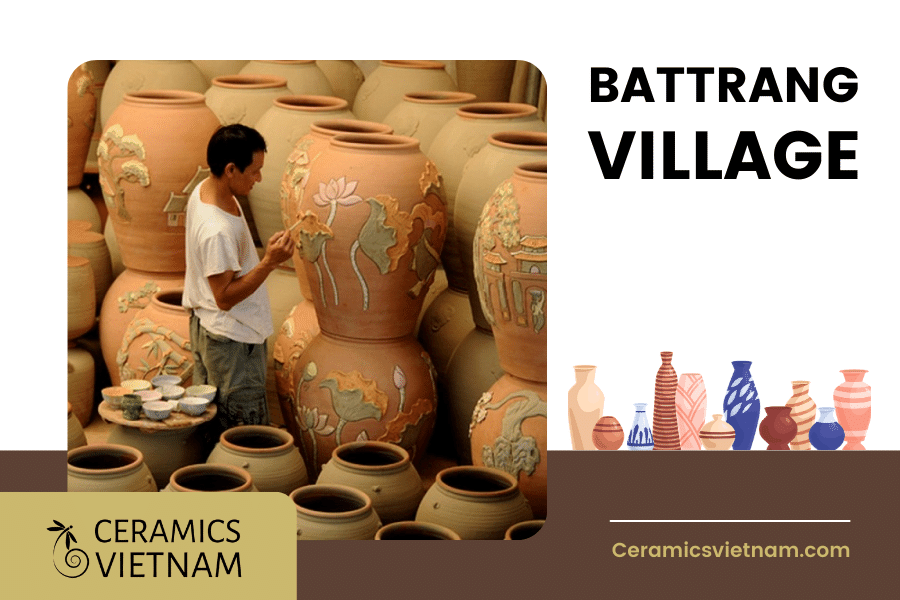
Bat Trang ceramics are well-known for their high quality and unique designs.
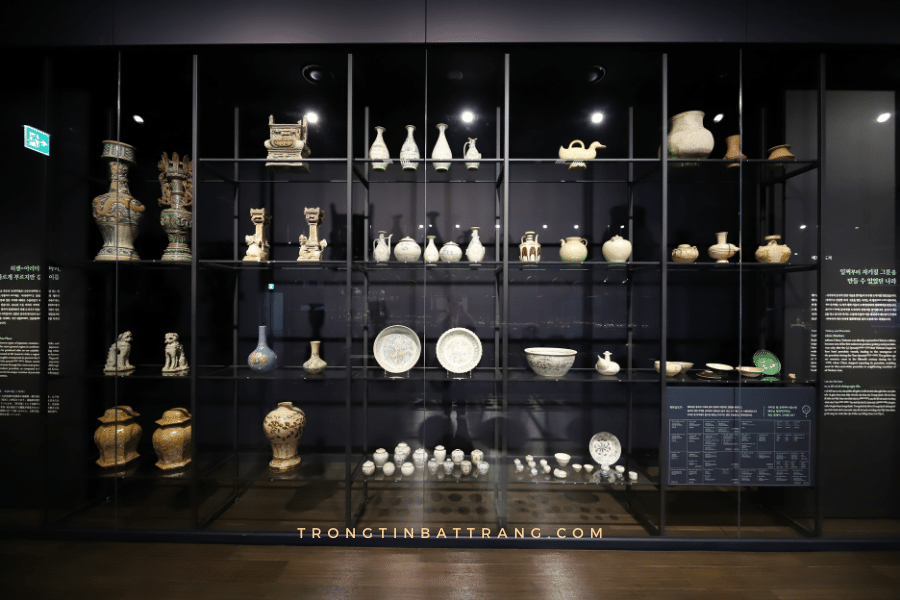
The Art of Complex Glazes in Bat Trang Ceramics
Phu Lang ceramics
Phu Lang is a village in Bac Ninh province, located about 40 km northeast of Hanoi, Vietnam. It is one of the most famous centers of ceramic production in Vietnam and is known for its high-quality pottery, which is produced using traditional techniques passed down through generations.
Phu Lang ceramics are made from local clay, which is known for its plasticity and durability. The clay is shaped by hand using traditional techniques, including the coil method and wheel throwing. Once the pottery has been shaped, it is left to dry in the sun before being fired in a wood-fired kiln.
Phu Lang ceramics are known for their large size, with many of the most famous pieces being large vases and urns. The pottery is decorated with intricate designs and motifs, including dragons, birds, and flowers. The glazes used on Phu Lang ceramics are typically green, brown, or white and are made from natural materials such as copper and iron oxide.
Phu Lang pottery has a long and rich history, dating back to the 14th century. During this time, the village was an important center of ceramic production, with potters producing ceramics for use in the imperial court as well as for domestic and religious purposes.
Today, Phu Lang continues to be an important center of ceramic production, with many artisans working to preserve and promote the village’s rich ceramic heritage. In addition to traditional ceramics, many potters in Phu Lang are experimenting with new forms and shapes, incorporating modern techniques and designs into their work.
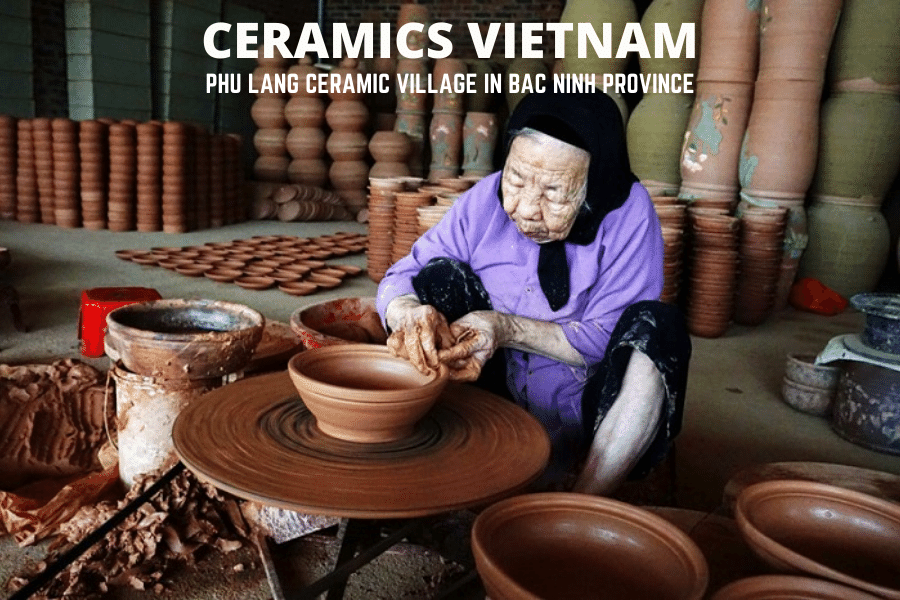
Phu Lang village has been a renowned center of ceramic production for centuries
Chu Dau ceramics
Chu Dau is a village in Hai Duong province, located about 70 km east of Hanoi, Vietnam. It is one of the most famous centers of ceramic production in Vietnam and is known for its high-quality pottery, which is produced using traditional techniques passed down through generations.
Chu Dau ceramics are made from local clay, which is known for its plasticity and durability. The clay is shaped by hand using traditional techniques, including the coil method and wheel throwing. Once the pottery has been shaped, it is left to dry in the sun before being fired in a wood-fired kiln.
Chu Dau pottery is known for its intricate designs and rich glazes, which often incorporate motifs such as dragons, phoenixes, and flowers. The glazes used on Chu Dau ceramics are typically multicolored and highly decorative, with many potters using layering techniques to create a rich and varied effect.
Chu Dau pottery has a long and rich history, dating back to the 15th century. During this time, the village was an important center of ceramic production, with potters producing ceramics for use in the imperial court as well as for domestic and religious purposes.
Chu Dau continues to be an important center of ceramic production, with many artisans working to preserve and promote the village’s rich ceramic heritage. In addition to traditional ceramics, many potters in Chu Dau are experimenting with new forms and shapes, incorporating modern techniques and designs into their work.
Chu Dau pottery is highly valued by collectors and enthusiasts around the world and is considered one of the most important examples of Vietnamese ceramic artistry. The village has also become a popular destination for tourists, who come to learn about the history of the craft and to purchase high-quality ceramics.
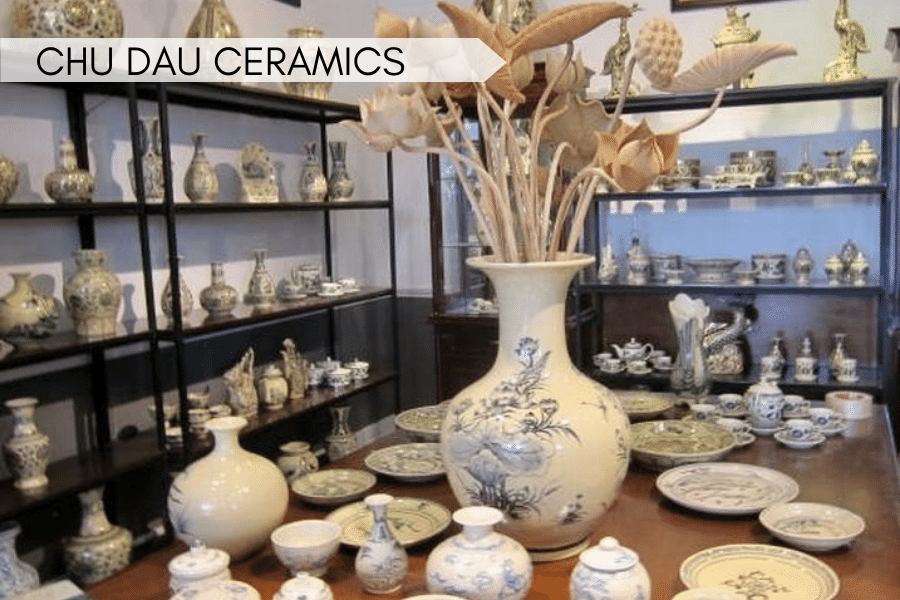
Chu Dau pottery is highly valued by collectors and enthusiasts in the world
Dong Trieu ceramics
Dong Trieu is a town in Quang Ninh province, located about 150 km east of Hanoi, Vietnam. It is one of the most famous centers of ceramic production in Vietnam and is known for its high-quality pottery, which is produced using traditional techniques passed down through generations.
Dong Trieu ceramics are made from local clay, which is known for its purity and plasticity. The clay is shaped by hand using traditional techniques, including the coil method and wheel throwing. Once the pottery has been shaped, it is left to dry in the sun before being fired in a wood-fired kiln.
Dong Trieu pottery is known for its intricate designs and rich glazes, which often incorporate motifs such as dragons, phoenixes, and flowers. The glazes used on Dong Trieu ceramics are typically multicolored and highly decorative, with many potters using layering techniques to create a rich and varied effect.
Dong Trieu pottery has a long and rich history, dating back to the 11th century. During this time, the town was an important center of ceramic production, with potters producing ceramics for use in the imperial court as well as for domestic and religious purposes.
Dong Trieu is going to be an important center of ceramic production, with many artisans working to preserve and promote the town’s rich ceramic heritage. In addition to traditional ceramics, many potters in Dong Trieu are experimenting with new forms and shapes, incorporating modern techniques and designs into their work.
Dong Trieu pottery is highly valued by collectors and enthusiasts around the world and is considered one of the most important examples of Vietnamese ceramic artistry. The town has also become a popular destination for tourists, who come to learn about the history of the craft and to purchase high-quality ceramics.
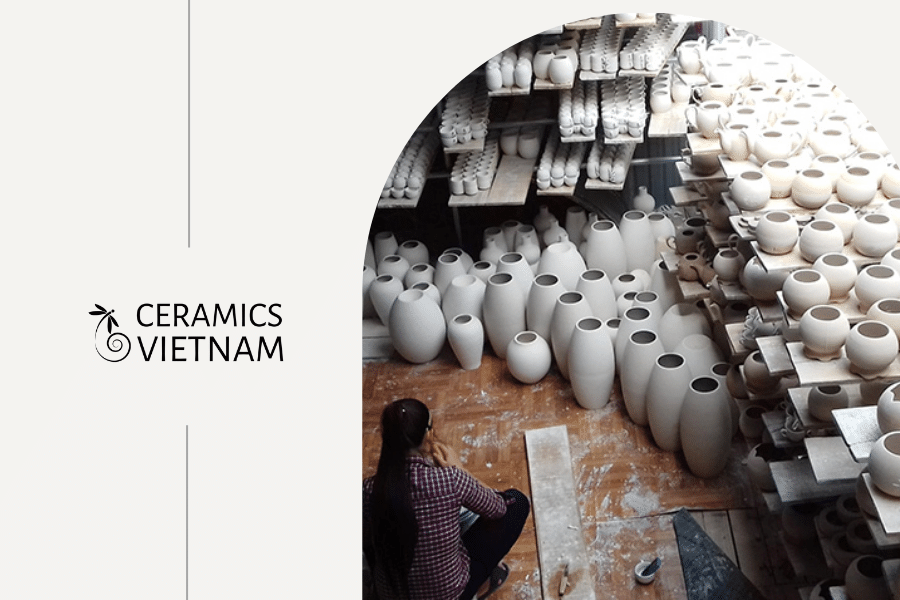
The timeless beauty of Dong Trieu ceramics
Contemporary ceramics
Contemporary ceramics are a relatively new addition to the Vietnamese ceramics industry. These ceramics are known for their modern designs and innovative techniques. Contemporary ceramics are often made using new materials and technology, and they come in various shapes and sizes. Some of the most popular contemporary ceramics lines in Vietnam include:
Celadon ceramics
Celadon ceramics, also known as green-glazed ceramics, are a type of pottery that originated in China during the Song dynasty (960-1279 CE) and later spread throughout Asia, including to Vietnam, Thailand, and Korea. Celadon ceramics are known for their distinctive pale green glaze, which is achieved by firing the pottery at high temperatures in a reducing atmosphere.
Celadon ceramics are made from a mixture of clay, feldspar, and quartz, which is shaped by hand using traditional techniques, including the coil method and wheel throwing. Once the pottery has been shaped, it is left to dry before being fired in a kiln. During firing, a glaze made from a mixture of iron oxide and feldspar is applied to the pottery, giving it its characteristic green color.
Celadon ceramics are known for their delicate and intricate designs, which often incorporate motifs such as flowers, birds, and landscapes. The glaze used on celadon ceramics is often crackled, which adds to the pottery’s beauty and complexity. Many celadon ceramics also feature carved designs, which are created by carving into the clay before glazing and firing.
Celadon ceramics have a long and rich history in Asia, with some of the most famous examples dating back to the Song dynasty in China. In Vietnam, celadon ceramics were produced during the Ly and Tran dynasties (10th-14th centuries), with many examples being produced in the northern city of Hanoi. Today, celadon ceramics continue to be produced in many parts of Asia, with both traditional and modern designs being created.
Celadon ceramics are highly valued by collectors and enthusiasts around the world and are considered an important example of traditional Asian ceramic artistry. Their delicate beauty and intricate designs have inspired many artists and designers, and they continue to be an important part of Asia’s cultural heritage.
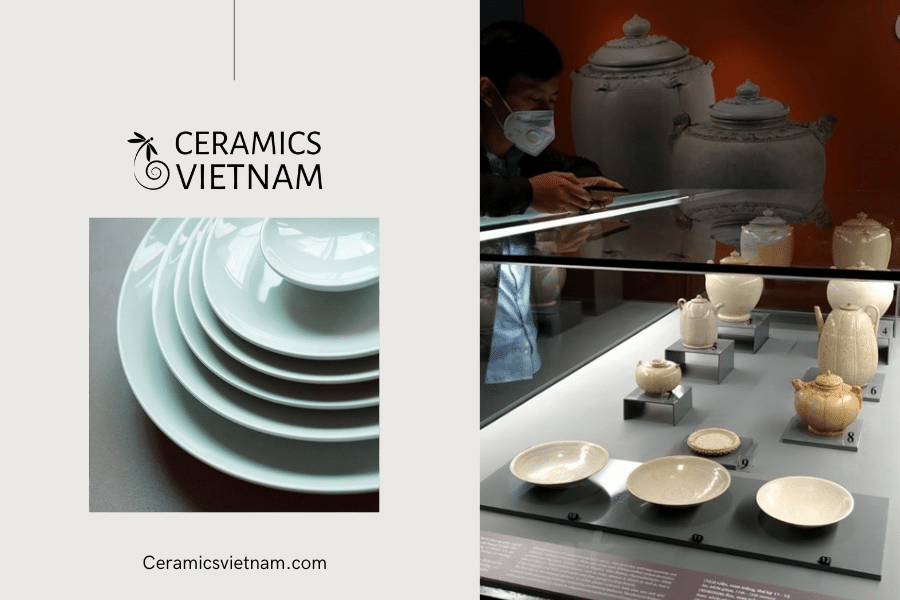
The timeless elegance of Celadon ceramics
Modern ceramics
Modern ceramics are a type of contemporary ceramics that are known for their innovative designs and techniques. These ceramics are often made using new materials, such as glass and metal, and they come in various shapes and sizes. Modern ceramics are popular among young people in Vietnam, who appreciate their modern aesthetic.
Thanh Tri ceramics
Thanh Tri is a district located in the southern part of Hanoi, Vietnam. It is home to a modern ceramics industry that produces a wide range of ceramic products, including tableware, decorative items, and architectural ceramics.
Thanh Tri modern ceramics are produced using modern production techniques, including slip-casting, jiggering, and machine-pressing. The clay used to make Thanh Tri ceramics is sourced locally and is known for its high plasticity and workability. The ceramics are fired in gas or electric kilns, which allow for precise temperature control and consistent firing results.
Thanh Tri ceramics are known for their contemporary designs, which often incorporate modern shapes and patterns. Many Thanh Tri ceramic products are decorated with bright colors and bold designs, which reflect the vibrancy of modern Vietnamese culture.
The modern ceramics industry in Thanh Tri has a relatively short history, dating back to the 1980s. However, it has grown rapidly in recent years, with many manufacturers investing in new technology and equipment to improve their production processes and product quality.
Today, Thanh Tri modern ceramics are exported to countries around the world and are highly valued for their quality and design. The industry provides employment opportunities for many people in the district and has contributed to the economic development of the area.
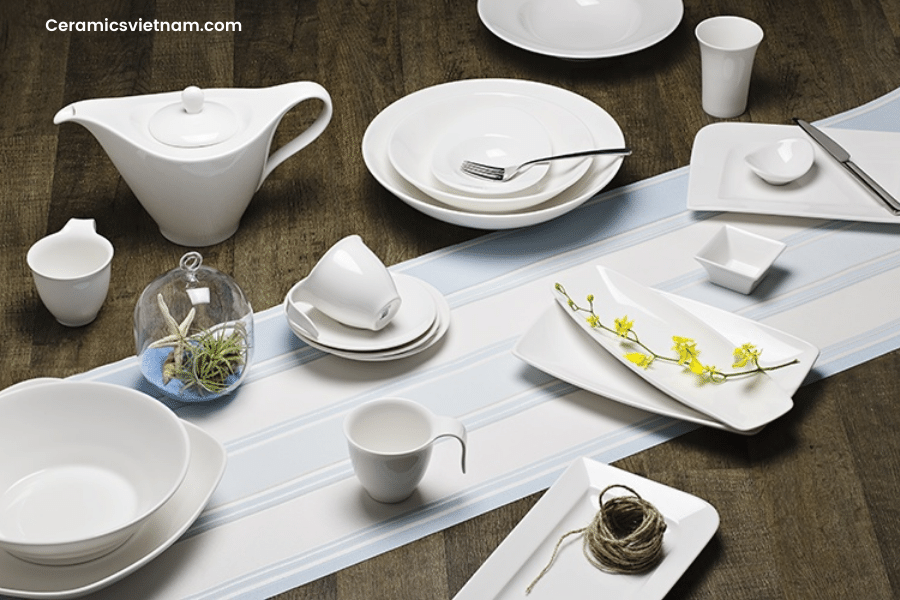
Thanh Tri’s modern ceramics industry
Hai Duong ceramics
Hai Duong is also well-known for its modern ceramics industry. Its modern ceramics are produced using modern production techniques, including slip-casting, jiggering, and machine-pressing. The clay used to make Hai Duong ceramics is sourced locally and is known for its high plasticity and workability. The ceramics are fired in gas or electric kilns, which allow for precise temperature control and consistent firing results.
Hai Duong ceramics are known for their contemporary designs, which often incorporate modern shapes and patterns. Many Hai Duong ceramic products are decorated with bright colors and bold designs, which reflect the vibrancy of modern Vietnamese culture.
The modern ceramics industry in Hai Duong has a relatively short history, dating back to the 1990s. However, it has grown rapidly in recent years, with many manufacturers investing in new technology and equipment to improve their production processes and product quality.
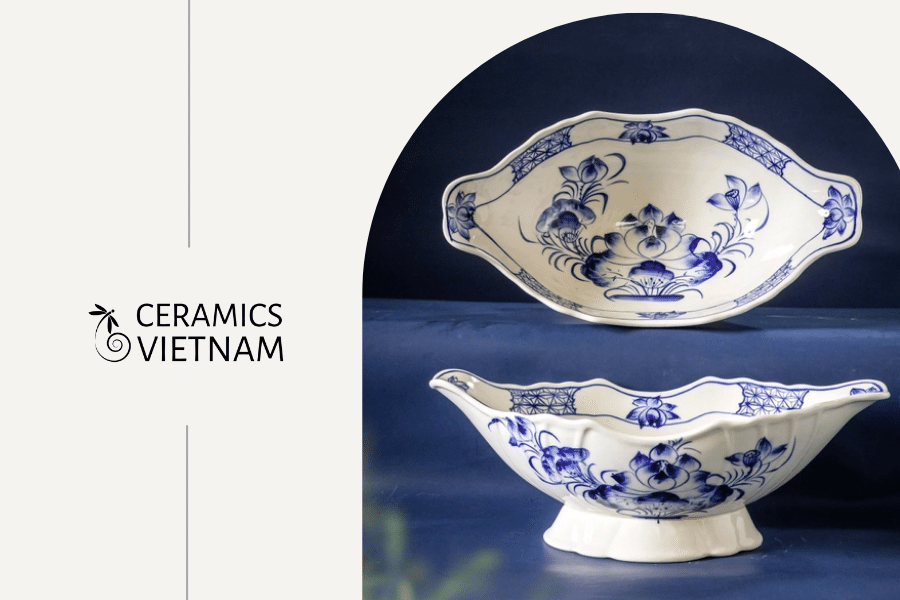
Modern ceramics industry in Hai Duong
Dong Nai ceramics
Dong Nai is a province located in southern Vietnam, known for its modern ceramics industry. The industry produces a wide range of ceramic products, including tableware, decorative items, and architectural ceramics.
Dong Nai modern ceramics are produced using modern production techniques, including slip-casting, jiggering, and machine-pressing. The clay used to make Dong Nai ceramics is sourced locally and is known for its high plasticity and workability. The ceramics are fired in gas or electric kilns, which allow for precise temperature control and consistent firing results.
Dong Nai ceramics are known for their contemporary designs, which often incorporate modern shapes and patterns. Many Dong Nai ceramic products are decorated with bright colors and bold designs, which reflect the vibrancy of modern Vietnamese culture.
The modern ceramics industry in Dong Nai has a relatively short history, dating back to the 1990s. However, it has grown rapidly in recent years, with many manufacturers investing in new technology and equipment to improve their production processes and product quality.
Today, Dong Nai modern ceramics are exported to countries around the world and are highly valued for their quality and design. The industry provides employment opportunities for many people in the province and has contributed to the economic development of the area.
These modern ceramics lines represent important examples of Vietnam’s ability to adapt to modern production methods while still maintaining its traditional ceramic heritage. The industry continues to grow and innovate, creating new and exciting products that reflect the evolving tastes and needs of consumers around the world.
In general, Vietnam is home to a wide variety of ceramics lines, each with its unique features and designs. From traditional ceramics to contemporary ceramics, Vietnam has something to offer for everyone. The country’s ceramics industry continues to thrive, thanks to the skilled artisans who create these exquisite pieces of art.
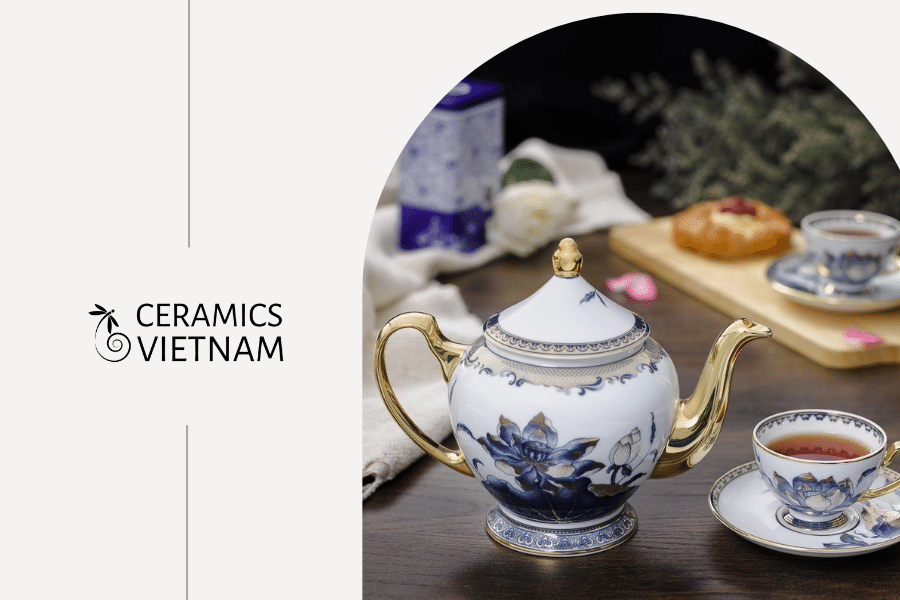
Exploring the vibrant modern ceramics industry in Dong Nai
The characteristics of Vietnamese ceramics
Ceramics have been an essential aspect of Vietnamese culture for centuries, and the craft has evolved over time to become one of the country’s most well-known art forms. Vietnamese ceramics are known for their unique characteristics that distinguish them from other ceramics around the world. This article will explore the history, techniques, and unique features of Vietnamese ceramics.
It can be seen that Vietnamese ceramics have a rich history, and the craft has been a significant part of the country’s cultural heritage for thousands of years. The art of pottery-making in Vietnam can be traced back to the Stone Age. Over time, Vietnamese ceramics have developed their unique style, reflecting the country’s rich culture and history.
The history of Vietnamese ceramics
The information mentioned about Vietnamese ceramics indicates that they have a long and rich history, with evidence of pottery dating back to the Neolithic period, around 4,000 BC. The country’s pottery-making techniques evolved over time, influenced by different dynasties, cultures, and historical events. Vietnamese ceramics were often used for utilitarian purposes, such as for cooking, storing food, and transporting water.
Techniques used in Vietnamese ceramics
Vietnamese ceramics are made using various techniques, depending on the type of clay, firing method, and style of the potter.
One of the most traditional techniques used in Vietnamese ceramics is the coil method. This involves rolling long coils of clay and then shaping them into the desired form by hand. The coils are then smoothed and blended together to create a seamless surface. This technique is often used to create large ceramic vessels such as urns and jars.
Another traditional technique used in Vietnamese ceramics is wheel throwing. This involves using a potter’s wheel to shape the clay into the desired form. The potter’s wheel allows for precise shaping and creates a uniform thickness throughout the ceramic object. This technique is often used to create smaller objects such as bowls, cups, and vases.
In addition to these traditional techniques, modern production methods are also used in Vietnamese ceramics. These include slip-casting, jiggering, and machine-pressing. Slip-casting involves pouring liquid clay into a mold to create a desired shape. Jiggering involves using a tool to shape the clay into the desired form. Machine-pressing involves using a machine to press the clay into a desired shape.
Vietnamese ceramics are also known for their distinctive glazes. Glazes are a mixture of minerals and other materials that are applied to the surface of the clay before firing. Traditional Vietnamese glazes are often made from natural materials such as iron oxide and copper. These glazes produce rich colors such as green and brown, which are characteristic of Vietnamese ceramics.
In addition to traditional glazes, modern techniques are also used to create unique and innovative glazes. For example, crystalline glazes are created by adding certain chemicals to the glaze mixture before firing, which creates a unique crystalline pattern on the surface of the ceramic object.
The techniques used in Vietnamese ceramics are diverse and reflect the rich cultural heritage of the country. From traditional coil methods and wheel throwing to modern slip-casting and machine-pressing, Vietnamese ceramics are created using a variety of techniques that produce unique and beautiful objects that are highly valued by collectors and enthusiasts around the world.
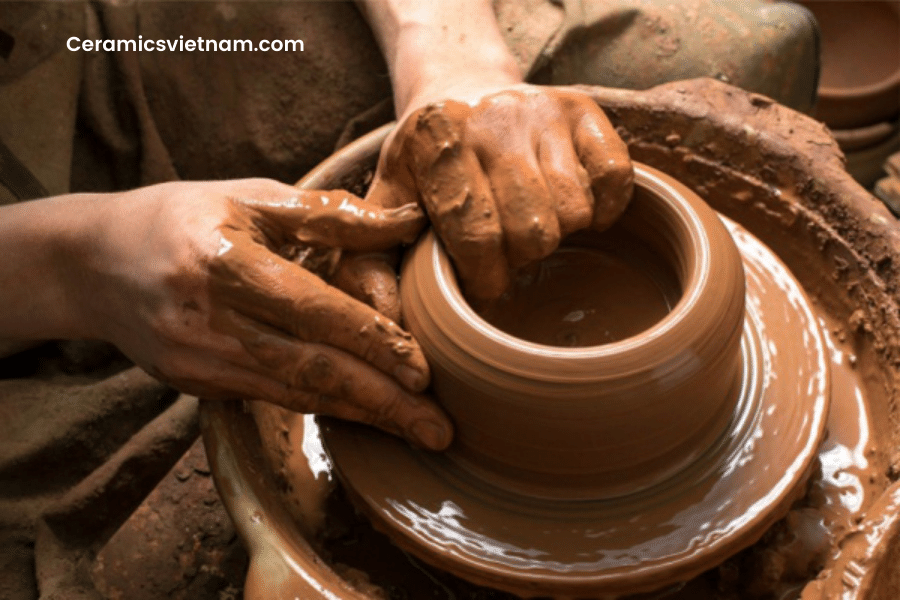
Exploring the techniques and glazes of Vietnamese ceramics
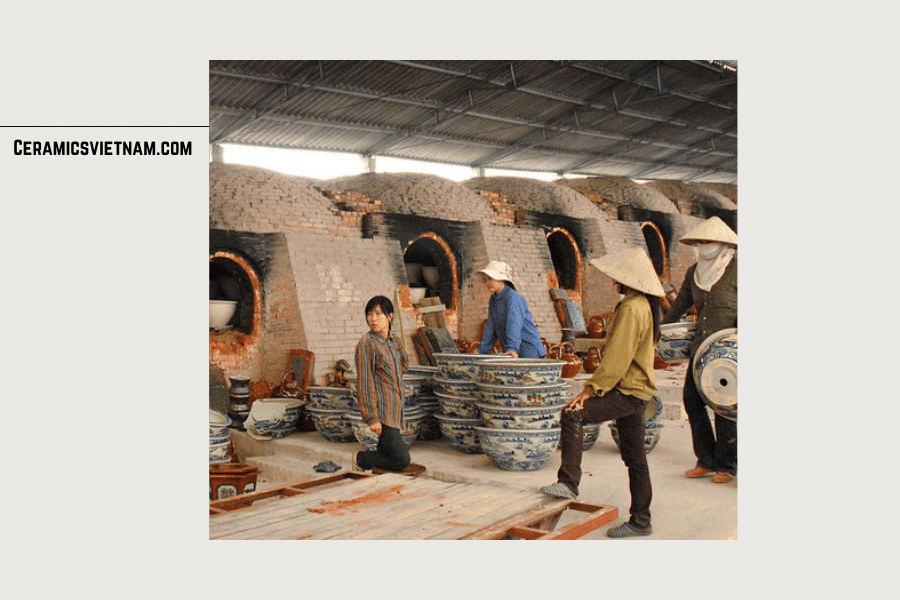
The traditional techniques used in Vietnamese Ceramics
The unique features of Vietnamese ceramics
Vietnamese ceramics are renowned for their unique features, which distinguish them from other ceramics around the world. One of the most distinctive features of Vietnamese ceramics is the use of white clay, which is abundant in the country. White clay, also known as kaolin, has a high plasticity and workability, making it ideal for intricate detailing and creating delicate patterns on the ceramics.
In addition to the use of white clay, Vietnamese ceramics are also known for their distinctive glazes. Traditional Vietnamese glazes are often made from natural materials such as iron oxide and copper, which produce rich colors such as green and brown. These glazes are applied to the surface of the pottery before firing, creating a shiny finish that enhances the beauty of the ceramics.
Vietnamese potters also use a variety of firing techniques, each of which produces unique patterns and colors on the surface of the pottery. One of the most traditional firing techniques is wood-firing, which involves firing the pottery in a wood-burning kiln. The use of wood as a fuel source creates variations in temperature and atmosphere, which can result in unique patterns and colors on the surface of the pottery.
Another unique feature of Vietnamese ceramics is the incorporation of cultural and historical elements into the design. For example, ceramics produced in the northern part of Vietnam often feature designs that reflect the influence of Chinese ceramics, while those produced in the southern part of the country may incorporate motifs from Cham or Khmer cultures.
In brief, the unique features of Vietnamese ceramics reflect the rich cultural heritage and artistic traditions of the country. The use of white clay, distinctive glazes, and various firing techniques, as well as the incorporation of cultural and historical elements, all contribute to the beauty and uniqueness of Vietnamese ceramics.
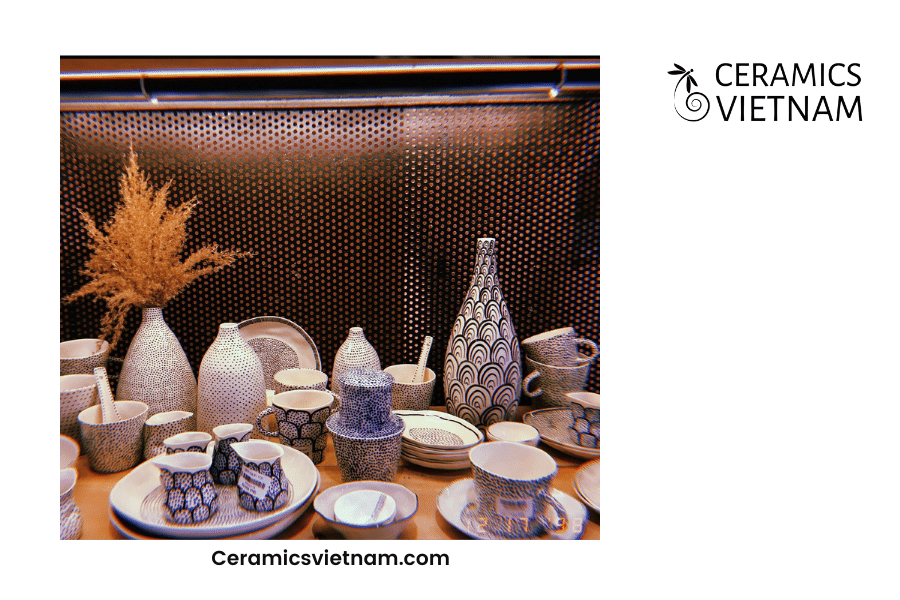
The unique features of Vietnamese ceramics
The different types of Vietnamese ceramics
Vietnamese ceramics can be classified into various types based on their style, shape, and function. Each type of ceramic has its own unique features and characteristics that distinguish it from others. Some of the most popular types of Vietnamese ceramics include celadon, brown glazed, blue and white, and enamel.
Celadon ceramics are known for their pale green color and intricate designs. These ceramics were popular during the Ly and Tran dynasties (11th-15th centuries) and are characterized by their crackled glaze and carved motifs, often featuring images of dragons, lotus flowers, and other traditional Vietnamese symbols.
Brown glazed ceramics, on the other hand, are famous for their earthy tones and simple shapes. These ceramics were produced during the Le dynasty (15th-18th centuries) and are often unglazed or partially glazed, allowing the natural color of the clay to show through.
Blue and white ceramics are characterized by their blue and white patterns, which were influenced by Chinese ceramics. These ceramics were popular during the 15th and 16th centuries and are often decorated with intricate floral or geometric designs.
Enamel ceramics are known for their bright colors and intricate designs. These ceramics were produced during the Nguyen dynasty (19th century) and are characterized by their use of overglaze enamels, which allowed for a wide range of colors and detailed designs.
Moreover, there are also many other styles and shapes of Vietnamese ceramics, including stoneware, terracotta, and porcelain. Each type of ceramic has its own unique history and artistic traditions, reflecting the rich cultural heritage of Vietnam.
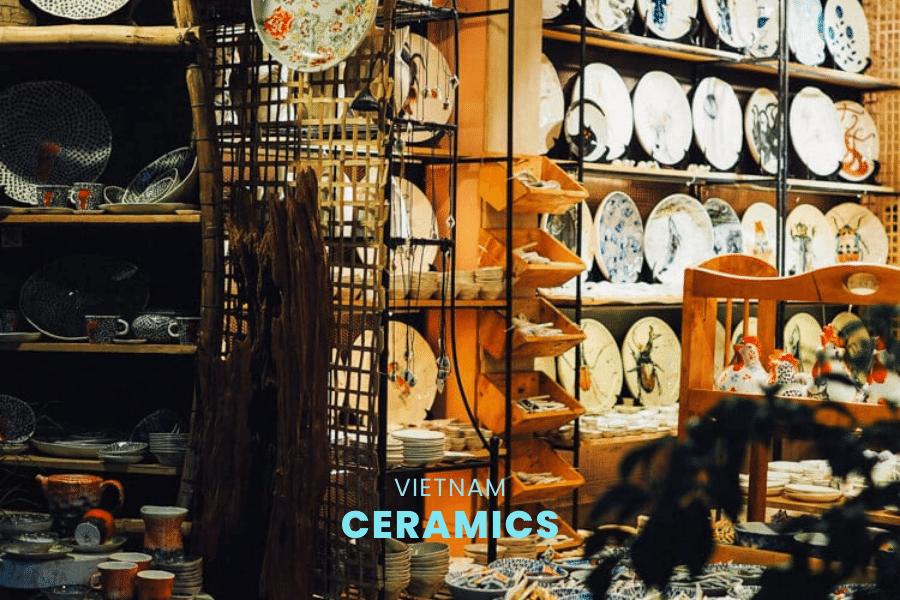
The diversity of Vietnamese Ceramics products
The significance of Vietnamese ceramics
Vietnamese ceramics hold a significant place in the cultural heritage and artistic traditions of Vietnam. The production of ceramics in Vietnam dates back to the Neolithic period, around 4000 BCE, and has continued to evolve and develop over the centuries. Today, Vietnamese ceramics are known for their unique features, intricate designs, and distinctive glazes, and are highly valued by collectors and enthusiasts around the world.
Vietnamese ceramics have played a significant role in the country’s economy, as they have been used for both domestic and export markets. During the 15th century, under the Tran dynasty, Vietnamese ceramics were produced on a large scale for export to China, Japan, and other countries in Southeast Asia. The ceramics produced during this time were highly prized for their beauty and quality, and helped to establish Vietnam as a major center of ceramic production.
Vietnamese ceramics also hold a significant place in the country’s cultural heritage. They reflect the artistic traditions, craftsmanship, and cultural influences of Vietnam’s rich history. From the intricate designs and motifs of celadon ceramics to the bold colors and patterns of enamel ceramics, Vietnamese ceramics are a testament to the creativity and artistic skill of the country’s potters.
In addition to their economic and cultural significance, Vietnamese ceramics also hold an important place in the global ceramics industry. They have influenced and been influenced by ceramics from other countries, and have helped to shape the evolution of ceramic techniques and styles.
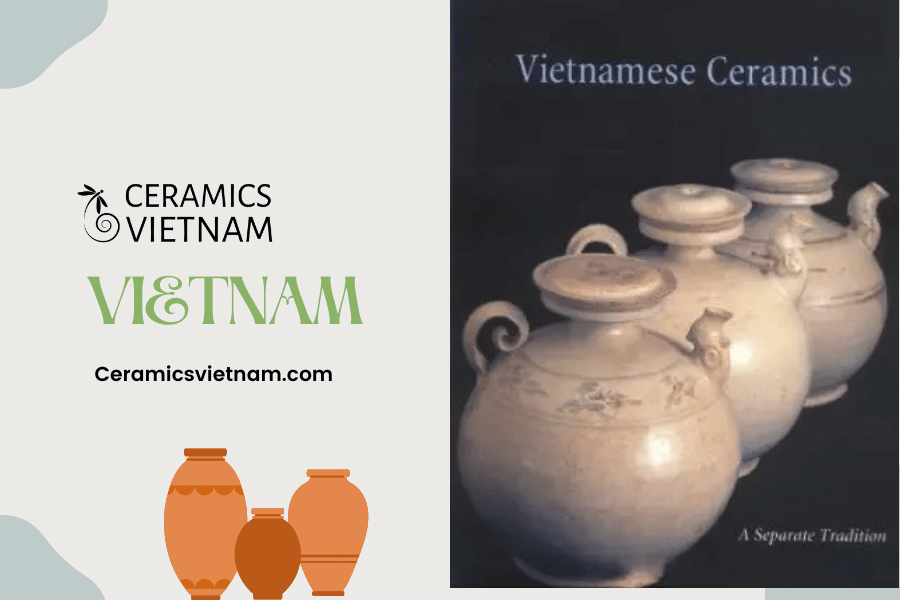
Vietnamese ceramics: A testament to cultural heritage and artistic traditions
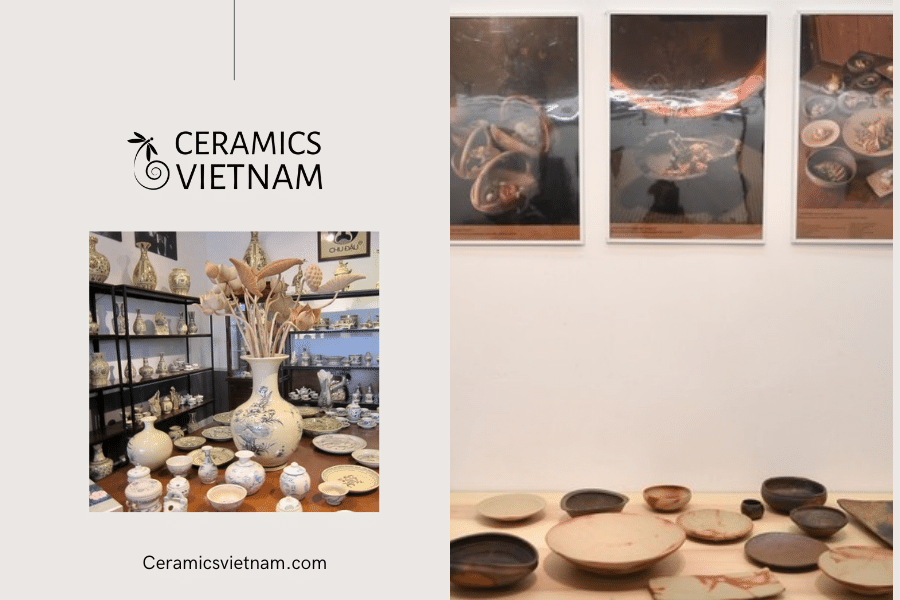
Vietnamese ceramics reflect the artistic traditions, craftsmanship, and cultural influences of their rich history.
Conclusion
In conclusion, traditional pottery has played an essential role in Vietnam’s cultural identity for thousands of years. From the earliest handcrafted pots to the intricate designs of modern ceramics, Vietnamese pottery is a testament to the country’s rich artistic and cultural heritage.
Vietnam’s unique geography and natural resources have allowed for the development of distinct pottery lines, each with their own styles and techniques. From Bat Trang’s delicate brush strokes to Chu Dau’s thick and bold lines, each pottery line reflects Vietnam’s rich history and heritage.
Vietnamese ceramics are not only beautiful but also functional, with products ranging from vases and tea sets to kitchen containers and toys. They have been used for both domestic and export markets, helping to establish Vietnam as a major center of ceramic production.
However, the decline of Vietnamese pottery in the 17th century and competition from cheap mass-produced ceramics from other countries have presented challenges to the survival of this traditional craft. Nonetheless, efforts to preserve and promote traditional Vietnamese pottery are ongoing, and there is a growing appreciation for handmade and unique ceramics. Vietnamese potters are finding new ways to incorporate modern techniques and designs into their work, which could help to attract a new generation of customers.
If you ever have the opportunity to visit Vietnam, be sure to explore its vibrant pottery culture and bring home a piece of this unique and beautiful art form. Vietnamese ceramics not only serve as a reminder of the country’s rich cultural heritage but also as a celebration of its artistic traditions and craftsmanship.
FAQs
- What are some of the most famous ceramics lines in Vietnam? Some of the most famous ceramics lines in Vietnam include Bat Trang, Phu Lang, Chu Dau, Dong Trieu, Thanh Tri, Hai Duong, and Dong Nai.
- What makes Vietnamese ceramics unique? Vietnamese ceramics are unique due to the country’s unique geography and natural resources, which have allowed for the creation of distinct pottery lines with their own styles and techniques.
- What types of products do Vietnamese ceramics produce? Vietnamese ceramics produce a wide range of products, including vases, bowls and plates, tea pots and cups, pictures, animal toys, tiles, bricks, and other building materials.
- How long has traditional pottery existed in Vietnam? Traditional pottery has existed in Vietnam for over six to seven thousand years, with evidence of its presence at sites of Hoa Binh, Bac Son, and Ha Long Culture.
- What role does pottery play in Vietnamese culture? Pottery plays an essential role in Vietnamese culture and is a testament to the skill and craftsmanship of its people. It is an integral part of the country’s rich history and cultural heritage.














Leave a reply